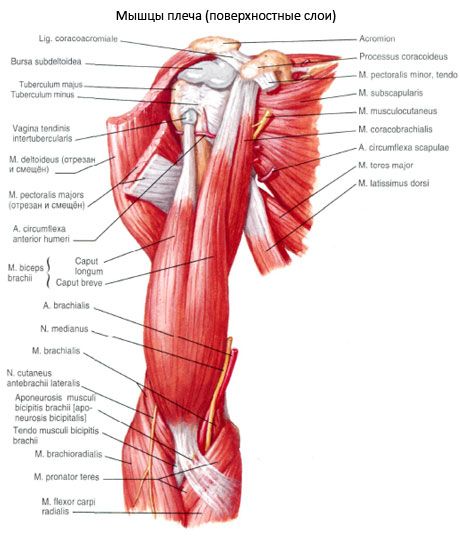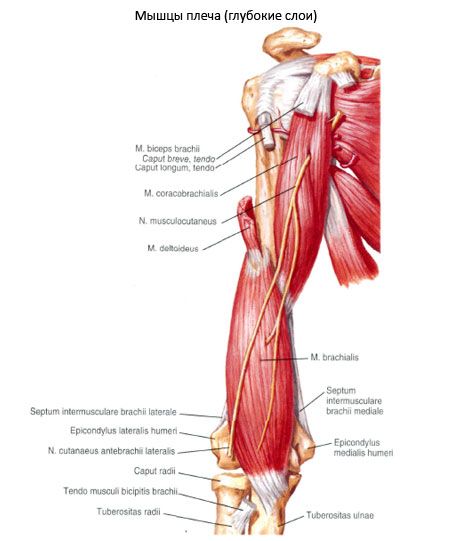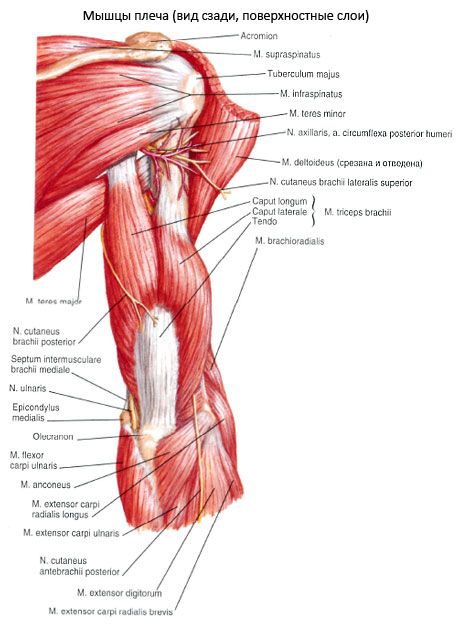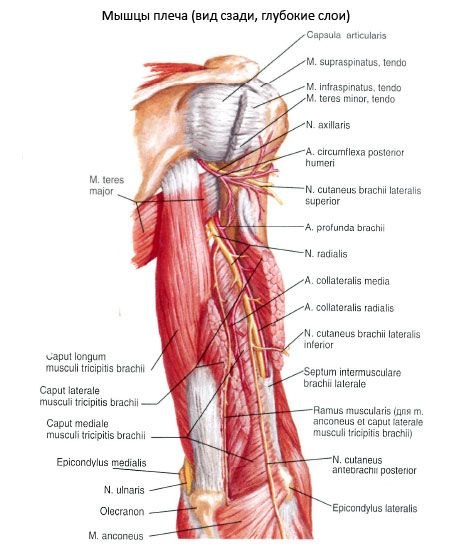Medical expert of the article
New publications
Shoulder muscles
Last reviewed: 04.07.2025

All iLive content is medically reviewed or fact checked to ensure as much factual accuracy as possible.
We have strict sourcing guidelines and only link to reputable media sites, academic research institutions and, whenever possible, medically peer reviewed studies. Note that the numbers in parentheses ([1], [2], etc.) are clickable links to these studies.
If you feel that any of our content is inaccurate, out-of-date, or otherwise questionable, please select it and press Ctrl + Enter.
The shoulder muscles are divided into two groups according to the topographic-anatomical principle - anterior (flexors) and posterior (extensors). The anterior group consists of three muscles: coracobrachialis, biceps brachii and brachialis; the posterior group - triceps brachii and olecranon. These two muscle groups are separated from each other by plates of the proper fascia of the shoulder: on the medial side - by the medial intermuscular septum of the shoulder, on the lateral side - by the lateral intermuscular septum of the shoulder.

Anterior group of shoulder muscles
The coracobrachialis muscle (m.coracobrachialis) begins at the apex of the coracoid process of the scapula, passes into a flat tendon that attaches to the humerus below the crest of the lesser tubercle at the level of attachment of the deltoid tendon. Some of the muscle bundles are woven into the medial intermuscular septum of the shoulder.

The biceps brachii muscle has two heads - short and long.
The short head (caput breve) originates together with the coracobrachialis muscle at the apex of the coracoid process of the scapula. The long head (caput longum) originates on the supraglenoid tubercle of the scapula with a long tendon that pierces the capsule of the shoulder joint from top to bottom (being covered inside the joint cavity by the synovial membrane) and exits onto the shoulder, where it lies in the intertubercular groove.
Biceps brachii (biceps brachii)
The brachialis muscle (m.brachialis) originates on the lower two-thirds of the body of the humerus between the deltoid tuberosity and the joint capsule of the elbow joint, on the medial and lateral intermuscular septa of the shoulder. It is attached to the tuberosity of the ulna. Bundles of the deep part of the tendon of this muscle are woven into the capsule of the elbow joint.

 [ 1 ]
[ 1 ]
Posterior group of shoulder muscles
The triceps brachii is thick, occupies the entire back surface of the shoulder, and has three heads. The lateral and medial heads originate on the humerus, and the long head originates on the scapula.
The lateral head (caput laterale) begins with tendon and muscle bundles on the outer surface of the humerus, between the attachment of the teres minor muscle proximally and the groove of the radial nerve distally, as well as on the posterior surface of the lateral intermuscular septum. The bundles of the lateral head pass downward and medially, covering the groove of the radial nerve with the nerve of the same name and deep vessels of the arm located in it.
Triceps brachii (triceps pelvic)

The anconeus muscle (m.anconeus) has a triangular shape, originates on the posterior surface of the lateral epicondyle of the humerus; attaches to the lateral surface of the olecranon, the posterior surface of the proximal part of the ulna and to the fascia of the forearm.

